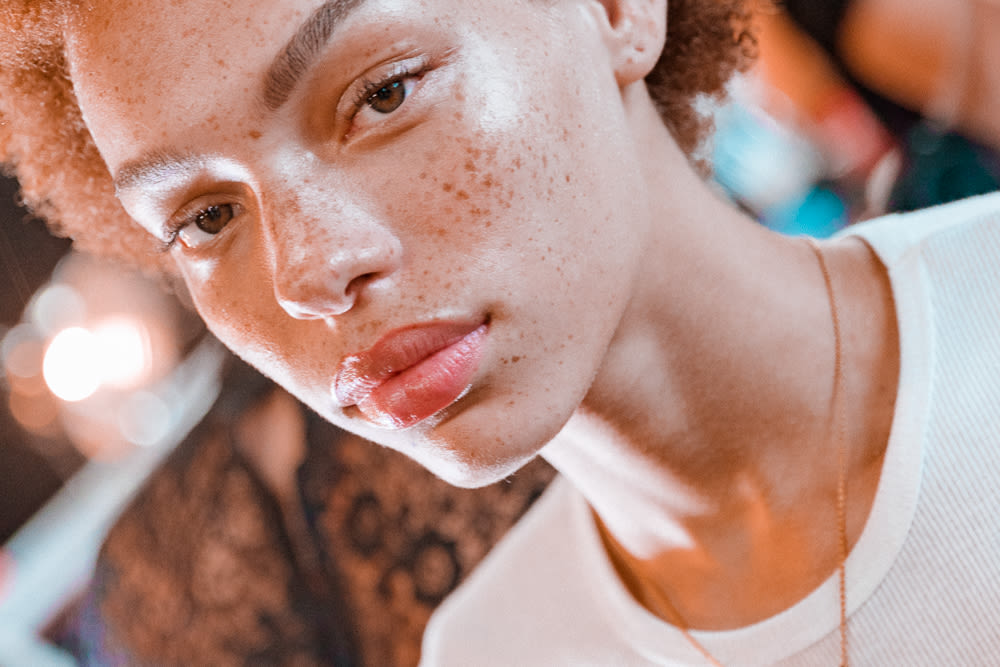Do you really know what it means to moisturize? If the search engine overlords at Google have anything to say on the matter (and they do—those folks know everything), it’s that many of you don’t. “How to moisturize” is a whopper of an SEO performer. Closely followed by “how to moisturize skin,” “how to moisturize hair,” and the straight-to-the-point, “how to moisturize me.” And to think: All you had to do was ask your friendly neighborhood beauty blog. ITG is ready to serve and happy to fill in the blanks. With a moisturizer explainer! Tailored so that you know all about the creamy stuff you’re working with, and so your skin can get locked and loaded with the good goo before winter arrives. There’s no time to waste. Let’s get to it.
Get to know your skin
Your skin is made up of several different layers, but the outermost layer, known as the stratum corneum (Latin for “horny layer”—fun!), directly relates to how your skin feels from a moisture perspective. Cells in this horny layer can hold water...and they can lose water—depending on a couple of factors. When the cells are plump and water-rich, your skin is soft, smooth—moisturized! And when they’re lacking water and dry? That’s called dehydrated skin. The latter can happen in a flash. Dry air, alcohol-laced topicals, and improper moisturization can make these cells shrivel and lose water. This is completely normal behavior. On average, between 300 and 400 mL (a little less than a pint) of water evaporates from your skin daily. It’s a moisturizer’s job to minimize that amount as much as possible.
So what makes a moisturizer a moisturizer?
So many things. It must 1) act as humectant, in that it draws water—from the air, from topicals, and from other cells in your body—to your horny layer. If you’re scoping the back of a lotion bottle, the humectants are listed under ingredients like hyaluronic acid, glycerin, butylene glycol, sorbitol, and sodium PCA. But humectants only attract water, they don’t retain it. That’s an occlusive’s job, the second component of a moisturizer.
Occlusives act like a lid to a pot of boiling water—they keep cells wet and prevent water loss. Some are better equipped to do that than others. The best ones—petroleum jelly, mineral oil, lanolin—can also break you out, so buyer beware. They’re almost too good at trapping things to your skin, dead skin cells and pimple-breeding bacteria included. A few less effective but more forgiving occlusives are cetyl alcohol (not a regular alcohol, a cool fatty alcohol) and stearic acid. And then silicones are great occlusives, too. You’ll want to play around and find your occlusive sweet-spot. Everyone’s skin is different, and what may work for your skin might irritate someone else.
So while humectants bring the water, and occlusives keep the water on your skin, emollients—the third and final component of a moisturizer—make everything go on smooth. Literally! Many emollients can also pull in double-duty as an occlusive—think lanolin, oils, and all the butters (shea, coconut, and the like). Mix them all together—humectants, occlusives, and emollients—and you’ve got yourself a moisturizer.
What does this mean for your skin?
If you want moisturized skin, you’ll need to moisturize constantly—plain and simple. Sure, patting your damp skin with oil post-shower is fine, but if you want hydrated skin that lasts all day, go for a lotion. And get smart about your shower habits, too. Clean with gentle soaps, take short warm (not hot—too drying) showers, wear loose clothing (Emily’s pajama theory, validated). And reapply, reapply, reapply. And if you need a recommendation on that front, ITG has some ideas. Stay smooth, folks.
Photo via ITG

